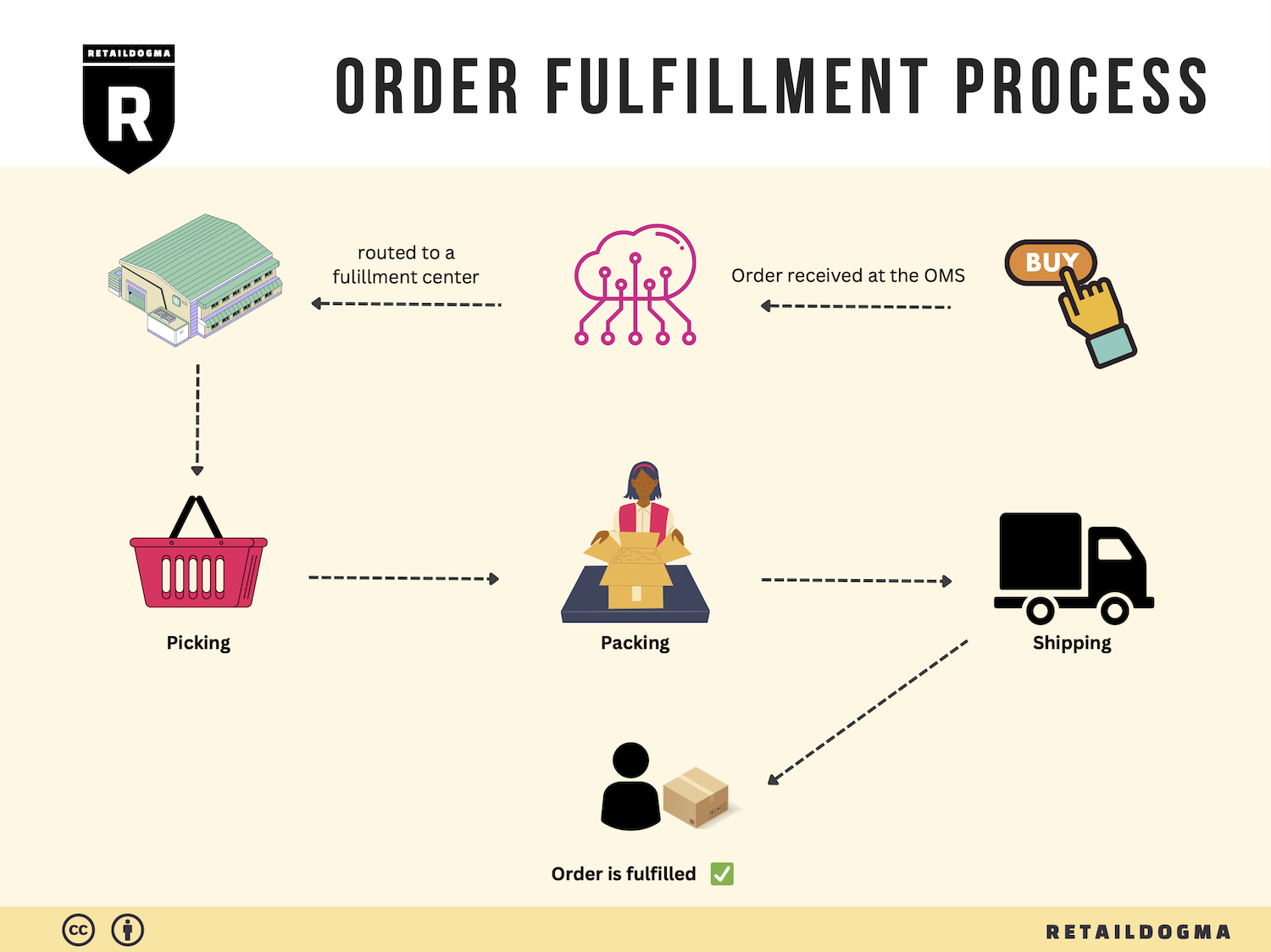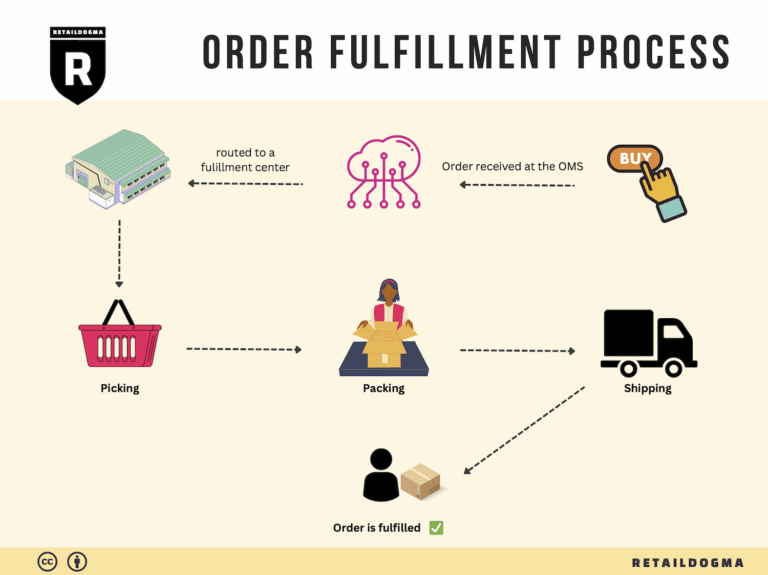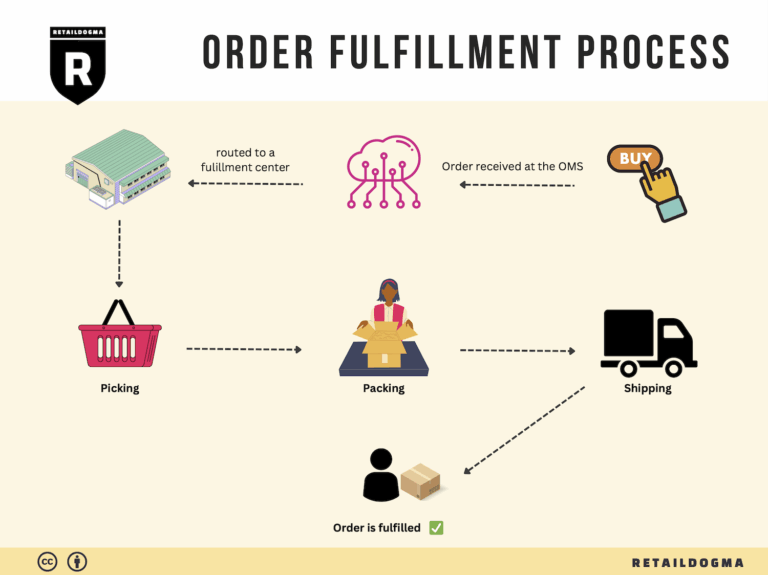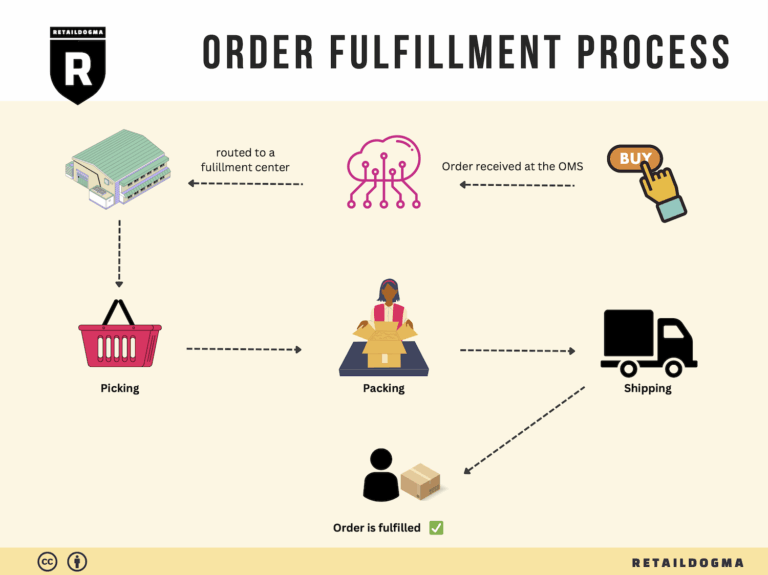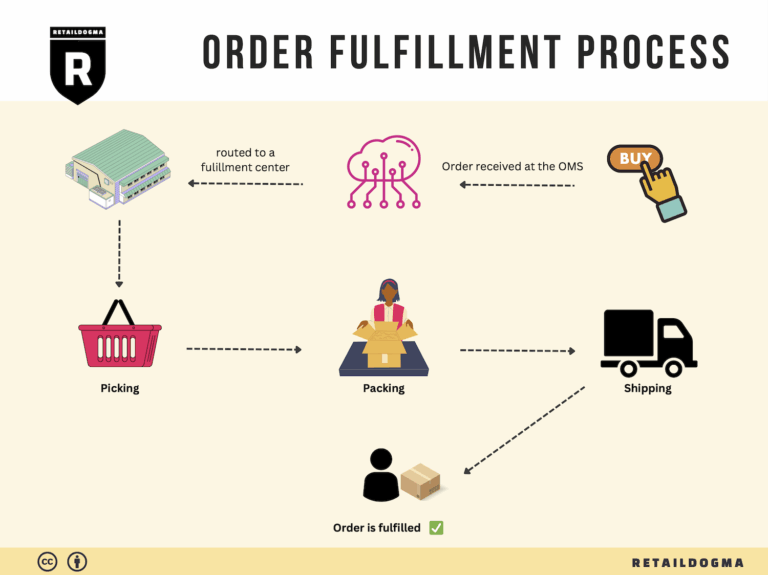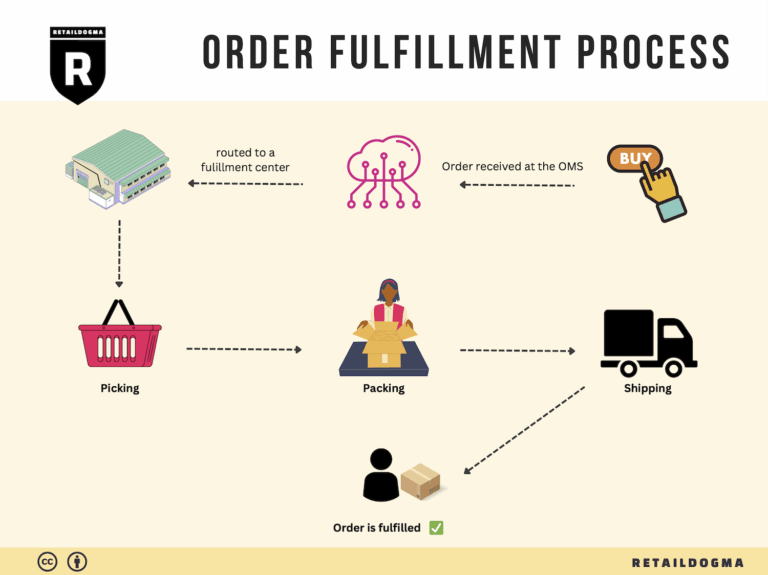Ecommerce Fulfillment Services: The Ultimate Guide (2025)
What is E-commerce Fulfillment? An Introduction for Growing Businesses
Understanding E-commerce Fulfillment
As an e-commerce business owner, you may find yourself facing a common challenge: the overwhelming task of packing and shipping orders efficiently while maintaining high customer satisfaction. As your sales grow, so do the complexities of logistics. This is where effective e-commerce fulfillment comes into play—a critical component that can either enhance your customer experience or hinder your growth.
At its core, fulfillment is the process of getting a product from your warehouse to your customer’s doorstep. This includes everything from receiving inventory and managing stock levels to picking, packing, and shipping orders. For growing businesses, the pressure to deliver orders quickly and accurately can be daunting. However, understanding fulfillment can empower you to make informed decisions that streamline your operations and enhance your service.
In this guide, we will explore various fulfillment models, including Third-Party Logistics (3PL) and Fulfillment by Amazon (FBA). Each of these models offers unique advantages and can be tailored to fit your business needs. We will also delve into core fulfillment services that can optimize your operations, such as inventory management, order processing, and returns handling.
Choosing the right fulfillment partner is crucial for your business’s success. We will provide practical tips on what to look for in a fulfillment service provider, including their technology capabilities, shipping options, and customer support. Understanding pricing structures will also be covered, so you can assess the cost-effectiveness of potential partners and ensure you are getting the best value for your investment.
Ultimately, the goal of this guide is to empower you with the knowledge necessary to make smart decisions about your logistics strategy. By understanding the nuances of e-commerce fulfillment, you can alleviate the stress of order processing, improve operational efficiency, and focus on what you do best—growing your business. Whether you are a startup looking to establish a solid foundation or an established retailer aiming to scale, effective fulfillment solutions are the key to your success in the competitive online marketplace.
What You’ll Learn In This Guide
- What is E-commerce Fulfillment? An Introduction for Growing Businesses
- The Order Fulfillment Process: From ‘Buy’ Button to Customer’s Door
- Comparing Fulfillment Models: In-House vs. 3PL vs. Dropshipping
- A Deep Dive into Amazon FBA: Pros, Cons, and Who It’s For
- Core Services Offered by Fulfillment Centers
- How to Choose a Fulfillment Partner: A 6-Point Checklist
- Understanding Fulfillment Pricing: A Breakdown of Common Fees
- Frequently Asked Questions (FAQs) about Fulfillment
- Conclusion: Is Outsourcing Fulfillment the Right Move for Your Business?
- Important Disclaimer
The Order Fulfillment Process: From ‘Buy’ Button to Customer’s Door
1. Receiving Inventory
The first step in the order fulfillment process is receiving inventory. When products arrive at the fulfillment center, they undergo a thorough inspection to ensure that they match the purchase order specifications in terms of quantity and quality. This step is crucial as it sets the foundation for accurate inventory management. A key term associated with this step is SKU (Stock Keeping Unit), which is a unique identifier for each product.
Efficient receiving processes allow businesses to quickly update their inventory systems and prevent stock discrepancies. Accurate receiving helps to minimize returns and customer dissatisfaction, ensuring that businesses can meet consumer demand promptly. By implementing robust quality control measures during receiving, e-commerce businesses can enhance their overall order accuracy, which is vital in maintaining customer trust and loyalty.
2. Warehouse Storage
Once the inventory is received and verified, it is stored within the warehouse. This step involves organizing products in a manner that optimizes space and facilitates easy access. Proper warehouse storage is important because it directly impacts the efficiency of the subsequent picking and packing processes. A key term here is slotting, which refers to the strategic placement of products within the warehouse to reduce picking time.
Effective storage solutions can lead to faster order fulfillment and reduced operational costs. By utilizing techniques such as zone picking or batch picking, businesses can streamline their processes, ensuring that items are easy to locate and retrieve. Furthermore, maintaining an organized storage system helps in accurately tracking inventory levels, thus preventing stockouts or overstock situations that could hinder sales.
3. Order Picking
Order picking is the process of selecting items from the warehouse to fulfill customer orders. This step is critical as it directly affects the speed and accuracy of order fulfillment. A common tool used in this stage is the pick list, which outlines the items and quantities needed for each order.
Efficient order picking can significantly enhance customer satisfaction, as it ensures that the correct items are selected and shipped without delay. Various picking methods can be employed, such as single order picking for individual orders or wave picking for larger batches. The choice of method depends on the volume of orders and the layout of the warehouse. Implementing technology, such as barcode scanning, can further increase accuracy and speed in this phase, reducing the chances of human error.
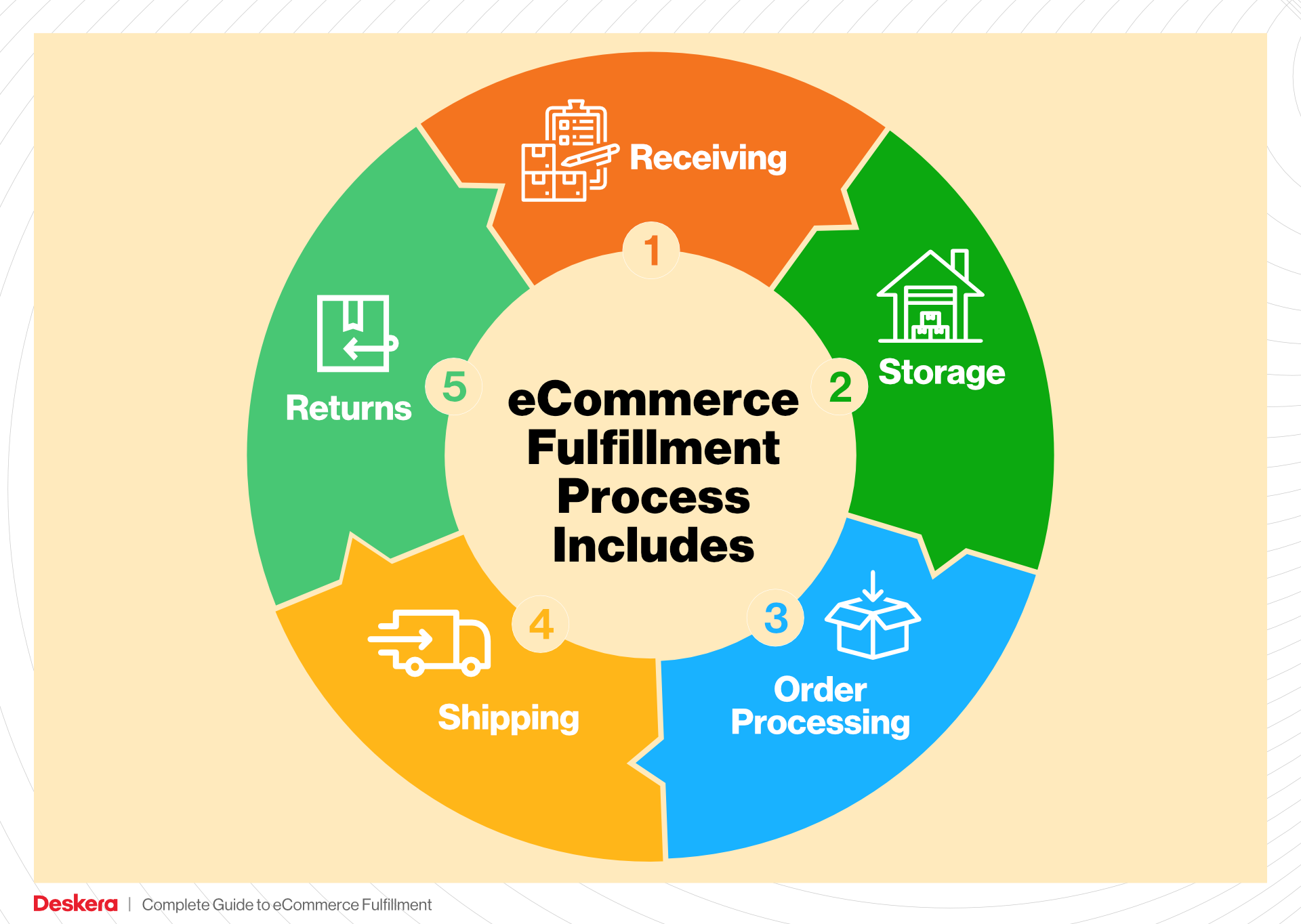
4. Order Packing
Once items are picked, they move to the packing stage, where they are prepared for shipment. This step is essential for protecting products during transit and ensuring they arrive in perfect condition. Effective packing not only involves the physical act of placing items in boxes but also includes labeling and documentation. A key term associated with this step is packaging materials, which include boxes, bubble wrap, and tape.
Proper packing techniques are vital for minimizing damages during shipping and returns. Businesses should invest in quality packaging solutions that cater to their product types. Additionally, incorporating branded packaging can enhance the unboxing experience for customers, reinforcing brand identity and customer loyalty. Efficient packing processes can reduce shipping costs by optimizing box sizes and minimizing waste, ultimately improving the bottom line.
5. Shipping & Delivery
The final step in the order fulfillment process is shipping and delivery. This phase involves selecting the appropriate shipping method and carrier, preparing shipping labels, and ensuring that packages are dispatched on time. A key term here is carrier management, which refers to the strategic selection and management of shipping providers to optimize cost and delivery speed.
Timely and reliable shipping is crucial in today’s competitive e-commerce landscape, where customers expect fast delivery. Businesses must evaluate various shipping options, including standard, expedited, and same-day delivery, to meet diverse customer needs. By leveraging technology and data analytics, e-commerce businesses can track shipments in real-time and communicate updates to customers, enhancing transparency and trust.
In conclusion, a well-structured order fulfillment process—from receiving inventory to shipping—ensures that e-commerce businesses can scale efficiently while meeting customer expectations. By focusing on each step and implementing best practices, businesses can improve operational efficiency, reduce costs, and ultimately drive growth.
Comparing Fulfillment Models: In-House vs. 3PL vs. Dropshipping
Fulfillment Model Comparison
| Model | Who Handles Inventory | Best For (Business Stage) | Key Advantage | Key Disadvantage |
|---|---|---|---|---|
| In-House Fulfillment | Business itself | Established businesses | Full control over inventory and processes | High overhead costs and resource requirements |
| Third-Party Logistics (3PL) | 3PL provider | Startups to established businesses | Scalable solutions and operational flexibility | Less control over inventory and fulfillment speed |
| Dropshipping | Supplier | Startups and small businesses | Low upfront investment and risk | Lower profit margins and reliance on supplier quality |
In-House Fulfillment
In-house fulfillment involves managing the entire inventory and order processing internally. This model is typically suited for established businesses that have the resources to maintain their own warehouse, staff, and logistics systems. The key advantage of in-house fulfillment is the complete control it offers over inventory, shipping processes, and customer service. Businesses can tailor their operations to meet specific needs, ensuring they maintain high standards of accuracy and speed. Furthermore, they can directly manage their inventory levels, which can lead to better stock control and a deeper understanding of customer purchasing patterns.
However, the disadvantages of in-house fulfillment are significant. The costs associated with warehousing, hiring staff, and maintaining logistics can be substantial, especially for smaller businesses or startups. Additionally, the operational complexity can divert attention from core business activities such as marketing and product development. As e-commerce demand fluctuates, businesses may find themselves over- or under-staffed, leading to inefficiencies and increased costs.
Third-Party Logistics (3PL)
Third-party logistics (3PL) providers, like United Fulfillment Solutions Inc., offer a comprehensive solution for businesses looking to outsource their fulfillment needs. This model is ideal for startups to established businesses that require scalable solutions without the burden of managing logistics themselves. 3PL providers handle inventory storage, order processing, and shipping, allowing businesses to focus on growth and customer engagement.
The key advantage of using a 3PL is the flexibility it provides. As order volumes increase, businesses can easily scale their fulfillment operations without investing in additional infrastructure or resources. 3PLs often have established relationships with carriers, which can lead to better shipping rates and faster delivery times. Moreover, many 3PL providers offer advanced technology for real-time inventory and order management, enhancing operational efficiency.
However, the primary disadvantage of 3PL is the potential loss of control over the fulfillment process. Businesses may experience variability in fulfillment speed and accuracy, which can affect customer satisfaction. Additionally, relying on a third party means that businesses must choose a provider carefully, as poor service from a 3PL can negatively impact brand reputation. Businesses must also be prepared for additional fees associated with 3PL services, which can eat into profit margins.
Dropshipping
Dropshipping is a fulfillment model where the retailer does not keep products in stock. Instead, when a customer places an order, the retailer purchases the item from a third-party supplier who then ships it directly to the customer. This model is particularly well-suited for startups and small businesses that want to minimize risk and investment in inventory.
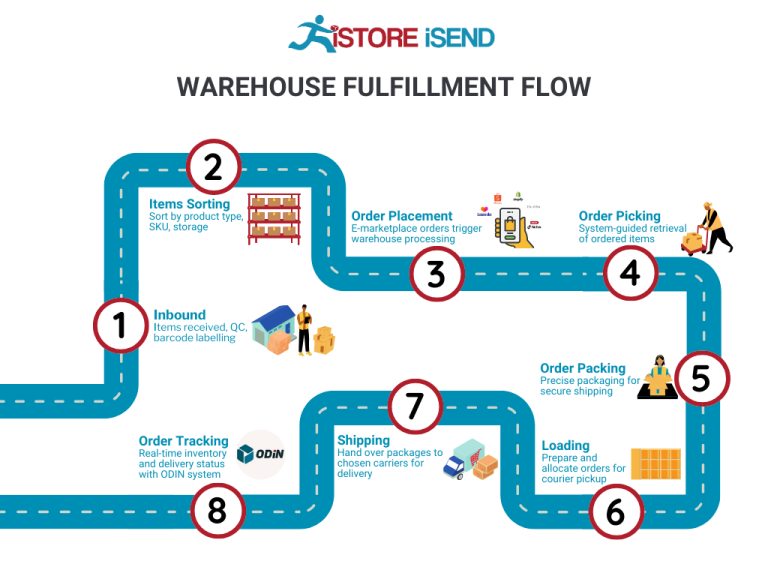
The primary advantage of dropshipping is the low upfront investment. Retailers do not need to purchase inventory upfront or manage a warehouse, allowing them to offer a wide variety of products without the associated costs. This model also provides flexibility in terms of product offerings, as retailers can easily test new products without significant financial commitment.
However, dropshipping comes with its challenges. Profit margins tend to be lower compared to other fulfillment methods due to the wholesale pricing from suppliers. Additionally, retailers are reliant on their suppliers for product quality and shipping times, which can lead to inconsistencies in customer experience. Furthermore, managing returns and customer service can be complicated, as retailers have limited control over the fulfillment process. As such, while dropshipping can be a low-risk entry point into e-commerce, it may not be sustainable for businesses looking to scale significantly.
Conclusion
Choosing the right fulfillment model is a critical decision for any e-commerce business. Each model—In-House Fulfillment, Third-Party Logistics, and Dropshipping—offers distinct advantages and disadvantages that can impact operational efficiency, cost management, and customer satisfaction. Business owners should carefully assess their current stage, resources, and long-term goals to determine which fulfillment strategy aligns best with their vision for growth.
A Deep Dive into Amazon FBA: Pros, Cons, and Who It’s For
Understanding Fulfillment by Amazon (FBA)
Fulfillment by Amazon (FBA) is a service provided by Amazon that enables sellers to store their products in Amazon’s fulfillment centers. Amazon then takes care of storage, packaging, shipping, and customer service for these products. When a customer orders a product, Amazon handles the entire fulfillment process, including returns. This allows sellers to leverage Amazon’s vast logistics network and customer base, facilitating a more efficient e-commerce experience.
How FBA Works
-
Setting Up an Account: Sellers begin by creating an Amazon Seller account and enrolling in the FBA program.
-
Product Preparation: Sellers prepare their products according to Amazon’s guidelines, which include labeling and packaging requirements.
-
Shipping to Amazon: Sellers send their products to Amazon’s fulfillment centers. Amazon provides guidelines on how to ship items, including labeling and packing instructions to ensure products arrive safely.
-
Storage: Products are stored in Amazon’s warehouses until they are sold. Sellers can track their inventory levels through the Seller Central dashboard.
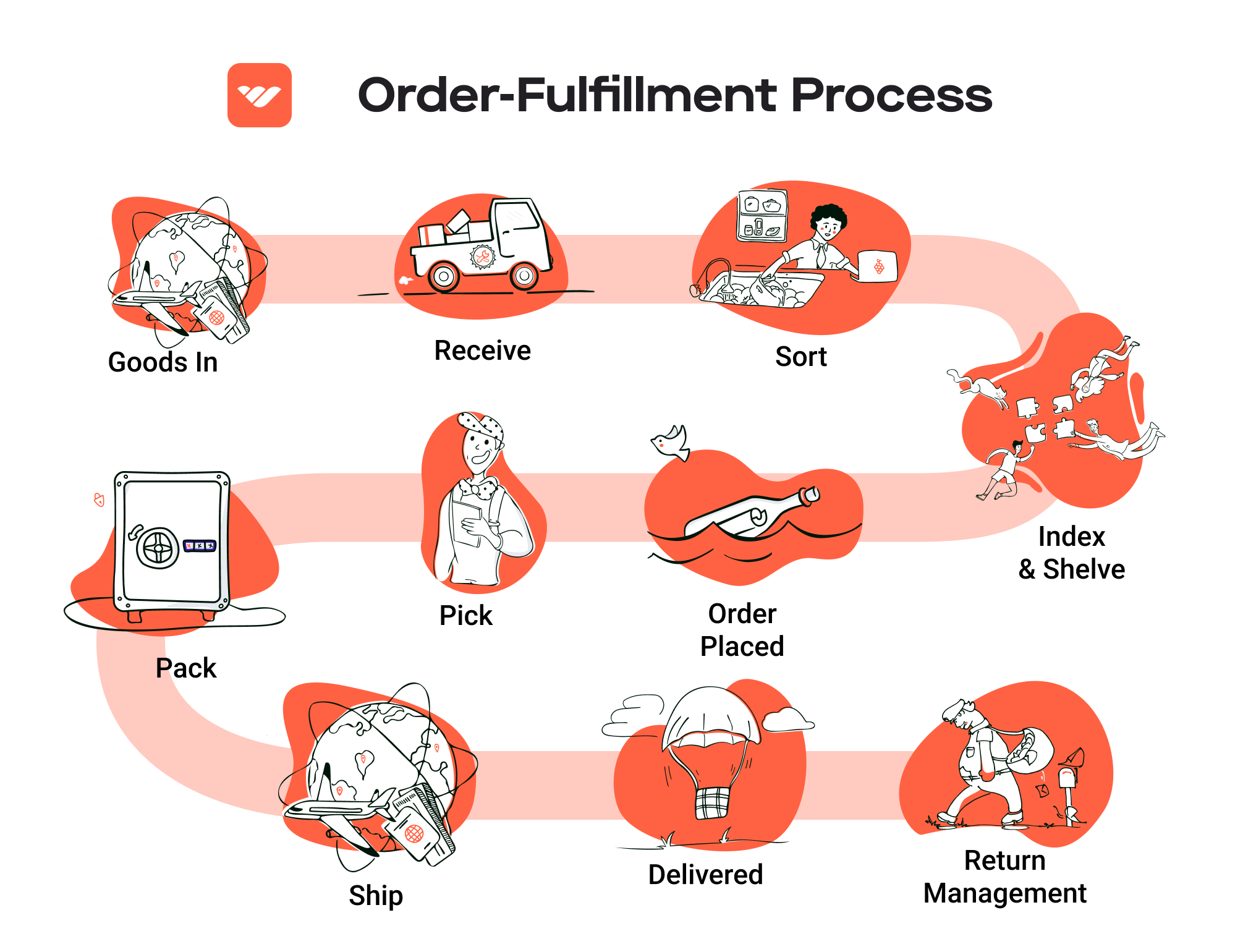
-
Order Fulfillment: Once an order is placed, Amazon picks, packs, and ships the product directly to the customer. This process is typically quick, often resulting in same-day or next-day shipping for Prime members.
-
Customer Service and Returns: Amazon handles customer service inquiries and processes returns on behalf of sellers, providing a seamless experience for buyers.
Pros of Using FBA
1. Prime Eligibility
One of the most significant advantages of FBA is that products become eligible for Amazon Prime. This not only increases visibility but also enhances sales potential since Prime members tend to prefer products that offer free two-day shipping.
2. Customer Trust
Amazon is a trusted name in e-commerce. By using FBA, sellers can benefit from this trust, as customers are more likely to purchase products fulfilled by Amazon due to their reliable shipping and customer service policies.
3. Multi-Channel Fulfillment
FBA allows sellers to fulfill orders from multiple sales channels (like eBay, Shopify, etc.) using Amazon’s logistics. This means that sellers can manage their inventory centrally while still reaching customers across various platforms.
4. Simplified Logistics
FBA simplifies the logistics of running an e-commerce business. Sellers do not need to worry about storage space, packaging, or shipping logistics, allowing them to focus on other aspects of their business, such as marketing and product development.
5. Scalability
FBA is particularly beneficial for scaling businesses. As demand increases, sellers can rely on Amazon’s infrastructure to handle larger volumes of orders without needing to invest in additional warehousing or logistics capabilities.
Cons of Using FBA
1. High Fees
FBA comes with various fees that can eat into profit margins. These include storage fees for products stored in Amazon’s warehouses and fulfillment fees for each order processed. Sellers must carefully calculate these costs to ensure their pricing remains profitable.
2. Strict Inventory Rules
Amazon enforces strict inventory management rules. Sellers need to adhere to specific guidelines for product preparation, packaging, and labeling. Failure to comply can result in additional fees or even the suspension of their seller account.
3. Commingling Risks
When sellers use FBA, their inventory may be commingled with that of other sellers. This means that customers could receive products from a different seller, which can lead to quality control issues. If a customer receives a damaged or defective item, it could negatively impact the original seller’s reputation.
4. Loss of Control
By relying on Amazon for fulfillment, sellers relinquish some control over the customer experience. Issues such as shipping delays, packaging quality, or customer service responses are managed by Amazon, which may not align with the seller’s brand values.
5. Dependency on Amazon
FBA creates a dependency on Amazon’s platform. Changes to Amazon’s policies, fees, or algorithms can significantly affect sellers’ businesses. This reliance can limit a seller’s ability to diversify their sales channels or customer base.
Who is FBA Best For?
Fulfillment by Amazon is particularly advantageous for certain types of sellers:
-
Small to Medium-Sized Businesses: Businesses looking to scale without investing heavily in logistics infrastructure can benefit significantly from FBA. It allows them to compete with larger retailers by leveraging Amazon’s capabilities.
-
Sellers with High Sales Volumes: Those who sell products with high turnover can maximize the efficiency of FBA, as the shipping and storage fees can be offset by the volume of sales.
-
E-commerce Startups: New sellers who lack experience in logistics and fulfillment can find FBA an excellent way to get started with minimal upfront investment and operational complexity.
-
Product Categories Suited for Amazon: Sellers with products that align well with Amazon’s customer base (such as electronics, home goods, and popular consumer items) will likely find success with FBA.
-
Brands Seeking Exposure: Brands looking to increase their visibility and trustworthiness can benefit from the Amazon platform, especially if they can take advantage of Prime eligibility.
In conclusion, while FBA offers significant advantages such as access to Amazon’s vast customer base and simplified logistics, it is essential for sellers to weigh these benefits against potential drawbacks, particularly in terms of fees and control. Understanding the nuances of FBA can help e-commerce businesses make informed decisions that align with their growth strategies and operational capabilities.
Core Services Offered by Fulfillment Centers
Inventory Management & Warehousing
Inventory management and warehousing are foundational services provided by fulfillment centers, playing a crucial role in the efficiency of e-commerce operations. This service involves the systematic tracking of inventory levels, orders, sales, and deliveries, ensuring that businesses always know what products are available and when they need to be reordered.
Benefits to E-commerce Businesses:
-
Real-Time Visibility: Effective inventory management systems offer real-time tracking of stock levels, enabling businesses to respond swiftly to changes in demand. This minimizes the risk of stockouts or overstock situations, both of which can negatively impact sales and customer satisfaction.
-
Improved Cash Flow: By maintaining optimal inventory levels, businesses can free up cash that would otherwise be tied up in excess stock. This allows for reinvestment in other areas of the business, such as marketing or product development.
-
Space Optimization: Fulfillment centers typically provide climate-controlled, strategically located warehousing solutions. This means that e-commerce businesses can scale their operations without worrying about the logistics of managing warehouse space, allowing them to focus on growth.
Pick and Pack Services
Pick and pack services are essential for fulfilling customer orders accurately and efficiently. This process involves selecting the correct items from the warehouse (picking) and packaging them appropriately for shipment (packing).
Benefits to E-commerce Businesses:
-
Speed and Efficiency: Fulfillment centers utilize sophisticated picking technology and trained staff to ensure that orders are processed quickly. This is crucial in meeting consumer expectations for fast delivery, particularly in an era where same-day shipping is becoming the norm.
-
Order Accuracy: High levels of order accuracy are critical for customer satisfaction and brand loyalty. Fulfillment centers often employ quality control measures, such as barcode scanning and double-checking processes, to ensure that the right items are shipped, reducing the likelihood of returns and complaints.
-
Scalability: As an e-commerce business grows, so too does the volume of orders. Fulfillment centers can scale their pick and pack services to accommodate spikes in order volume, such as during peak holiday seasons, without compromising on service quality.
Kitting and Assembly
Kitting and assembly refer to the process of combining multiple products into a single package or preparing products for retail sale. This service is particularly useful for businesses that offer bundled products or require additional assembly before items can be shipped to customers.
Benefits to E-commerce Businesses:
-
Enhanced Product Offerings: By utilizing kitting services, businesses can create attractive product bundles that appeal to consumers, potentially increasing the average order value. This can be particularly effective in competitive markets where differentiation is key.
-
Reduced Labor Costs: Outsourcing kitting and assembly to a fulfillment center can significantly reduce labor costs associated with these processes. This allows businesses to focus their internal resources on core functions such as marketing and customer service.
-
Streamlined Operations: A fulfillment center’s expertise in kitting and assembly ensures that these processes are handled efficiently, reducing lead times and enhancing overall operational effectiveness. This leads to faster turnaround times for customers, further improving satisfaction.
Returns Management (Reverse Logistics)
Returns management, or reverse logistics, is an often-overlooked aspect of e-commerce fulfillment. This service encompasses the processes involved in managing product returns, including inspections, restocking, and handling customer communications.
Benefits to E-commerce Businesses:
-
Customer Retention: A streamlined returns process can significantly enhance customer satisfaction. When customers feel confident that they can easily return items, they are more likely to make purchases, knowing that they have the option to return if necessary. This can lead to increased customer loyalty and repeat business.
-
Efficiency and Cost Savings: Fulfillment centers specialize in managing returns, which can reduce the operational burden on e-commerce businesses. Efficient returns processing helps minimize losses associated with returned goods, including restocking and transportation costs.
-
Data Insights: Analyzing return data can provide valuable insights into customer behavior and product quality. Understanding why products are returned can help businesses make informed decisions about inventory, product offerings, and marketing strategies.
In conclusion, partnering with a fulfillment center that offers comprehensive services—such as inventory management, pick and pack, kitting and assembly, and returns management—can significantly streamline e-commerce operations. These core services not only enhance operational efficiency but also improve customer satisfaction and loyalty, ultimately driving business growth.
How to Choose a Fulfillment Partner: A 6-Point Checklist
Location & Warehouse Network
The geographical location of your fulfillment partner can significantly impact shipping times, costs, and overall customer satisfaction. A partner with a strategically located warehouse network can help you reach your customers more efficiently.
Why It’s Important:
– Shipping Costs: Proximity to major markets can reduce shipping costs.
– Delivery Speed: A well-placed fulfillment center can enhance delivery speed, a critical factor in customer satisfaction.
– Returns Management: Having warehouses closer to customer bases can streamline the returns process.
Questions to Ask:
1. Where are your fulfillment centers located, and how does this impact shipping times to my target markets?
2. Do you have plans for expanding your warehouse network?
3. How do you handle logistics for international shipping if required?
Technology & Integrations
In today’s digital landscape, seamless technology integration is vital for efficient operations. Your fulfillment partner should have robust systems that allow for real-time order tracking, inventory management, and easy integration with your existing e-commerce platforms.
Why It’s Important:
– Real-Time Data: Access to real-time data helps you manage inventory and orders effectively.
– Automation: Advanced technology can automate repetitive tasks, reducing errors and freeing up your team to focus on growth.
– Compatibility: Ensuring that your partner can integrate with your existing systems will facilitate smoother operations.
Questions to Ask:
1. What fulfillment management system do you use, and what features does it offer?
2. Can your systems integrate with my e-commerce platform (e.g., Shopify, WooCommerce)?
3. How do you handle updates and maintenance of your technology?
Specializations (e.g., cold storage, oversized items)
Different businesses have unique needs when it comes to fulfillment. If your products require special handling—such as cold storage for perishables or specialized packing for oversized items—your fulfillment partner must have the expertise to manage these requirements.
Why It’s Important:
– Product Integrity: Specialized storage solutions ensure that products remain in optimal condition.
– Compliance: Certain products may have regulatory requirements that must be met.
– Efficiency: A partner experienced in your product category can streamline processes and reduce costs.
Questions to Ask:
1. What types of products do you specialize in handling, and do you have experience with my specific product type?
2. What facilities and equipment do you have in place for specialized storage needs?
3. Can you provide case studies or references from similar businesses you’ve worked with?
Scalability & Capacity
As your business grows, your fulfillment partner should be able to scale operations to meet increased demand without compromising service quality. This ensures that you can grow your sales without worrying about fulfillment logistics.
Why It’s Important:
– Flexibility: A scalable partner can quickly adjust to seasonal spikes or unexpected demand surges.
– Long-Term Partnership: You want a partner that can grow with you, minimizing disruptions during growth phases.
– Resource Management: Efficient capacity management can help reduce costs and improve service levels.
Questions to Ask:
1. What is your current capacity, and how do you manage peak seasons?
2. Can you provide examples of how you have scaled operations for other clients?
3. What processes do you have in place to ensure that you can accommodate sudden spikes in order volume?
Pricing and Contracts
Understanding the pricing structure and contract terms is crucial for ensuring that your fulfillment partnership is cost-effective. Transparent pricing models can help you budget accurately and avoid unexpected fees.
Why It’s Important:
– Cost Management: Knowing the full cost of services helps in maintaining your profit margins.
– Contract Flexibility: Contracts should allow for changes in business needs without punitive fees.
– Value Assessment: You need to weigh the pricing against the services offered to determine overall value.
Questions to Ask:
1. What is your pricing structure (e.g., per order, storage fees, shipping costs)?
2. Are there any hidden fees I should be aware of?
3. What are the terms for contract renewal and termination?
Customer Support & Reviews
A reliable fulfillment partner should provide excellent customer support and have a track record of positive client feedback. This is crucial for resolving issues quickly and maintaining smooth operations.
Why It’s Important:
– Issue Resolution: Quick and effective support can minimize disruptions in your operations.
– Client Satisfaction: Positive reviews and testimonials can indicate a partner’s reliability and service quality.
– Communication: A partner that prioritizes communication will help you stay informed about your orders and inventory status.
Questions to Ask:
1. What level of support do you provide, and how can I reach your support team?
2. Can you share references or case studies from current or past clients?
3. How do you handle complaints or issues that arise during the fulfillment process?
By following this checklist, e-commerce business owners, operations managers, and entrepreneurs can make informed decisions when selecting a fulfillment partner. Each point addresses critical aspects of the partnership that can significantly impact your business’s efficiency, growth, and customer satisfaction.
Understanding Fulfillment Pricing: A Breakdown of Common Fees
Initial Setup Fees
Initial setup fees are typically incurred when you first engage a fulfillment service provider. These fees can cover a variety of services including account setup, system integration, and onboarding processes. Depending on the complexity of your business operations, these fees can vary significantly.
How It’s Calculated:
Setup fees are often a one-time charge and may range from a few hundred to several thousand dollars. Factors influencing this cost include the level of customization required, the size of your inventory, and the time needed to integrate your systems with the fulfillment provider’s technology. When seeking a quote, ensure you inquire about the specifics included in the setup fee to avoid unexpected costs later.
Receiving Fees
Receiving fees are charged when your products arrive at the fulfillment center. These fees cover the costs associated with unloading, inspecting, and logging your inventory into the system.
How It’s Calculated:
Receiving fees can be based on the number of pallets or cartons received, and they may also include charges for additional services such as quality checks or labeling. Typically, you might see rates ranging from $20 to $50 per pallet or carton, depending on the complexity of the receiving process. Be sure to clarify how these fees are structured, particularly if you have a diverse range of products.
Storage Fees (per pallet/bin)
Storage fees are incurred for the space your inventory occupies within the fulfillment center. This cost is an essential aspect of your overall fulfillment expenses and can significantly impact your bottom line.
How It’s Calculated:
Storage fees are generally calculated on a monthly basis and can be charged per pallet, bin, or cubic foot, depending on the fulfillment center’s pricing structure. Rates can vary widely, often ranging from $10 to $30 per pallet per month. It’s important to analyze your inventory turnover rates; high turnover can mitigate storage costs, while slow-moving inventory may lead to increased fees. Some fulfillment centers may offer tiered pricing that decreases with higher volumes, so be sure to ask about these options.
Pick & Pack Fees (per item/order)
Pick and pack fees are charged for the labor involved in selecting items from inventory and preparing them for shipment. This is a crucial step in the fulfillment process and can vary based on the nature of your products.
How It’s Calculated:
These fees are typically calculated on a per-item basis or per order, with rates ranging from $0.50 to $2.00 per item. In some cases, a flat fee per order might apply, which could be beneficial for businesses with multiple items per order. Factors influencing these fees include the complexity of the picking process (e.g., bulk items versus individual pieces) and any special packing requirements. It’s advisable to discuss your specific needs with your provider to get an accurate understanding of these costs.
Shipping Fees
Shipping fees are the costs associated with transporting your products to customers. This is often one of the most significant expenses in the fulfillment process and can vary based on several factors.
How It’s Calculated:
Shipping fees are influenced by factors such as package dimensions, weight, destination, and the shipping method selected (standard, expedited, etc.). Many fulfillment centers have partnerships with multiple carriers, which allows them to offer competitive rates. Typically, these fees are passed on directly to you, but some providers may offer volume discounts or flat-rate shipping options. It’s crucial to clarify how these fees are structured and whether there are additional surcharges based on shipping zones or seasonal rates.
Tips for Getting an Accurate Quote
-
Be Transparent About Your Needs: Provide detailed information about your product types, order volumes, and fulfillment requirements. This will help providers give you a more tailored quote.
-
Ask for a Breakdown of Fees: Request a detailed breakdown of all potential fees, including any hidden costs that may arise during the fulfillment process.
-
Inquire About Discounts and Incentives: Many fulfillment centers offer discounts for larger volumes or long-term contracts. Understanding these options can lead to significant savings.
-
Evaluate the Total Cost of Fulfillment: Look beyond individual fees and consider the overall cost-effectiveness of the service, including speed, accuracy, and reliability.
-
Request References or Case Studies: Ask for examples of how similar businesses have benefitted from their services, as this can provide insight into their pricing and performance.
By understanding these common fulfillment pricing models and following these tips, you can make more informed decisions and choose a fulfillment partner that aligns with your business goals.
Frequently Asked Questions (FAQs) about Fulfillment
1. What is United Fulfillment Solutions Inc. (UFSI)?
United Fulfillment Solutions Inc. is a third-party logistics (3PL) provider specializing in e-commerce order fulfillment. Founded in 2000, UFSI offers a range of services including B2B and B2C order fulfillment, inventory management, returns management, and personalized embroidery services. The company is dedicated to delivering fast, accurate, and reliable fulfillment solutions to help businesses scale their operations efficiently.
2. What is a fulfillment center?
A fulfillment center is a specialized facility that stores, picks, packs, and ships products on behalf of e-commerce businesses. Unlike traditional warehouses, which primarily focus on storage, fulfillment centers are designed to streamline the entire order processing cycle, ensuring timely delivery to customers. United Fulfillment Solutions operates multiple fulfillment centers across the U.S. to enhance order efficiency and speed.
3. What is a 3PL?
A third-party logistics (3PL) provider is a company that manages logistics and supply chain operations for other businesses. This includes warehousing, inventory management, order processing, and shipping. By partnering with a 3PL like United Fulfillment Solutions, businesses can focus on their core competencies while outsourcing their logistics needs to experts.
4. How much do fulfillment services cost?
The cost of fulfillment services varies based on several factors, including order volume, the complexity of the products, storage needs, and shipping destinations. United Fulfillment Solutions offers customized pricing tailored to each client’s specific requirements. It’s advisable to consult directly with their team for a detailed quote based on your business needs.
5. What types of businesses can benefit from UFSI’s fulfillment services?
United Fulfillment Solutions caters to a diverse range of businesses, from startups to established retailers. Whether you are in B2B or B2C sectors, UFSI can tailor their fulfillment solutions to meet your specific needs, regardless of the industry you operate in.
6. What technologies does UFSI use for order management?
UFSI utilizes a robust Fulfillment Management System that integrates with various e-commerce platforms and ERP systems. This technology allows clients to access real-time data on orders and inventory, enabling efficient management of their logistics operations. Additionally, UFSI’s Integration Team collaborates with clients to optimize existing processes.
7. How does UFSI ensure order accuracy?
United Fulfillment Solutions maintains a high order accuracy rate of 99.94% through stringent quality control measures and auditing procedures. Their staff is trained to handle products with care, and their advanced technology tracks orders throughout the fulfillment process to minimize errors.
8. Can UFSI handle returns management?
Yes, UFSI offers a comprehensive returns management service. They inspect, process, and restock returned goods efficiently, ensuring that your customers have a hassle-free return experience. This service is essential for maintaining customer satisfaction and loyalty.
9. What is the typical turnaround time for shipping orders?
United Fulfillment Solutions prides itself on speed, offering same-day shipping up to 10 p.m. ET. This commitment to fast fulfillment ensures that your customers receive their orders promptly, which is crucial for maintaining a competitive edge in the e-commerce landscape.
10. How can I get started with UFSI’s fulfillment services?
To start working with United Fulfillment Solutions, you can reach out through their website or contact their sales team directly. They will assign an Integration Team to discuss your specific needs, audit your current processes, and implement tailored fulfillment solutions that align with your business goals.
Conclusion: Is Outsourcing Fulfillment the Right Move for Your Business?
Unlocking Growth Through Fulfillment Solutions
Outsourcing fulfillment can be a transformative decision for e-commerce businesses looking to scale. By partnering with a specialized fulfillment service like United Fulfillment Solutions Inc., you can reap significant benefits that directly impact your bottom line.
Time Savings: Managing logistics in-house can be a time-consuming endeavor, detracting from your core business activities. A dedicated fulfillment partner streamlines order processing, allowing you to focus on strategic initiatives such as marketing, product development, and customer engagement.
Scalability: As your business grows, so do your operational demands. Fulfillment services offer the flexibility to scale quickly without the burden of investing in additional infrastructure or personnel. Whether you experience seasonal spikes in demand or steady growth, a reliable partner can adapt to your needs, ensuring that you meet customer expectations without compromising service quality.
Expertise and Efficiency: With years of experience in the industry, fulfillment providers bring specialized knowledge and cutting-edge technology to the table. They understand the nuances of inventory management, shipping logistics, and returns processing, which can lead to improved accuracy and efficiency in your operations. United Fulfillment Solutions boasts impressive metrics, including a 99.86% on-time shipping rate and 99.94% order accuracy, showcasing the potential advantages of outsourcing.
However, the key to success lies in selecting the right fulfillment partner. Your choice should align with your specific business needs, ensuring they can accommodate your products and growth trajectory.
To determine if outsourcing fulfillment is the right step for your business, consider conducting an audit of your current shipping processes. Assess areas where you can improve efficiency, reduce costs, and enhance customer satisfaction. This evaluation will provide clarity on whether a partnership with a fulfillment service could unlock new growth opportunities for your e-commerce venture.
Important Disclaimer
⚠️ Important Disclaimer
The information in this guide is for educational purposes. Fulfillment services, pricing, and platform features change frequently. Always conduct your own due diligence and consult with providers directly before making business decisions.
